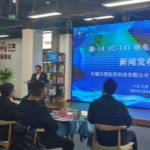Chinese scientists have shattered performance barriers in next-generation lighting technology with the development of ultra-stable perovskite LEDs boasting a lifespan exceeding 180,000 hours – equivalent to 20 years of continuous operation. This breakthrough by researchers at the University of Science and Technology of China addresses a decade-long challenge in materials science that previously limited commercial applications.
The Stability Revolution
Led by Professor Xiao Zhengguo, the team engineered all-inorganic perovskite films through innovative chemical engineering and high-temperature processing. Their approach created crystalline structures with fewer defects, achieving unprecedented brightness of 1.16 million nits – nearly 1,000 times brighter than standard smartphone displays.
From Lab to Living Room
The new LEDs demonstrate 22% luminous efficiency while maintaining stability under extreme conditions. At typical display brightness levels (100 nits), the technology theoretically outlasts current OLED alternatives by decades. This development could accelerate adoption in high-end electronics, automotive displays, and industrial lighting systems.
Global Implications
Published in Nature, the research positions China at the forefront of perovskite applications – a material family already transforming solar energy technology. The breakthrough comes as manufacturers seek sustainable, cost-effective alternatives to rare-earth-dependent LEDs, potentially reshaping global supply chains in the $160 billion display industry.
Reference(s):
cgtn.com







